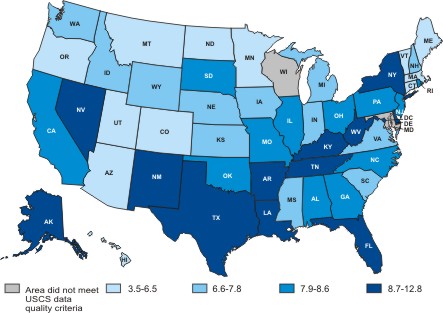
An American study offers hope to the 80 per cent of UK sufferers who are beyond help because the disease is diagnosed too late
Sunday, 28 November 2010
Thousands of lives could be saved by screening for early signs of lung cancer, a groundbreaking new study has found. Deaths from the disease fell by 20 per cent among former or current smokers who were checked with CT scans, according to the US National Cancer Institute (NCI) study of more than 50,000 people.
With more than 1.3 million new cases worldwide every year, lung cancer is Britain’s biggest cancer killer and 80 per cent of patients die within a year of being diagnosed. Smoking is the biggest risk factor, but around 4,000 new patients every year have never smoked a cigarette in their lives, according to Cancer Research UK; as many as half of new cases are former smokers. the number and rapidity of patient deaths is largely due to late diagnosis, as symptoms usually appear only after it is too late for surgery.
UK experts last night said they were “incredibly excited” about the US research, which for the first time shows how relatively harmless CT scans can save thousand of lives. They hope the results will provide much-needed impetus for the UK’s own lung cancer screening study, which has languished after its announcement almost two years ago.
Dr Michael Peake, the national clinical lead for lung cancer at NHS Cancer Improvement, said: “This is the first time that lung cancer screening has shown a positive impact on survival rates. if this was breast cancer, the results would be all over the front pages, but the public still see lung cancer as self-inflicted. it isn’t sexy and few survive, so there aren’t many people banging their fists on TV, and it’s hard to find a young attractive female lung cancer patient, I’m afraid, yet it kills more people than any other cancer. Targeted screening, together with increased awareness among the public and primary care professionals about the symptoms, and improved standards of hospital care could save 10,000 lives a year.”
Currently, only 7 per cent of lung cancer patients in the UK are alive after five years (the vast majority, –80 per cent – are beyond curative surgery by the time they see a specialist). This compares with survival rates of 82 per cent for breast and 76 per cent for prostate cancer. While a small pea-sized lump in the breast can be detected through vigilant self-examination, a lung tumour must be 50 times as big before any symptoms such as a persistent cough appear.
To make matters worse, the chances of having an operation depend on your postcode, as more than two-fifths of hospitals have no specialist thoracic surgeon, said Dr Peake.
The NCI study compared annual CT scans with X-rays on current or former heavy smokers from across the US. Survival rates increased with CT scans, as malignant cells were detected earlier. Research shows that 70 per cent of lung cancer sufferers can survive for at least five years if surgeons operate before disease spreads within the lung or to other organs.
Researchers in the US are now analysing the data to see if CT scans would benefit high-risk non-smokers, such as those who inhale smoke passively over many years. Dr Christine Berg from the NCI said: “The study cost $250m, but given the huge worldwide burden of this disease, this was an extraordinarily important question to answer. the public health message is to never smoke, but for all those who make the mistake but then quit, they should know we are trying to do as much as possible to help them, too.”
The long-awaited UK pilot study is likely to investigate whether one-off scans produce similar results, as this would be much cheaper for the NHS. Economic analysis shows that catching cancer early saves money on expensive drugs, hospital admissions, lost earnings and benefits.
Dr Jesme Fox, medical director of the Royal Castle Lung Cancer Foundation, said: “We’ve seen the massive difference screening has made to breast, bowel and cervical cancer, so I hope there will now be a big step forward for lung cancer screening.”
Case study
Andrew Melville, 50, from Staffordshire, died from lung cancer in 2008 after smoking cigarettes for more than 30 years. he left behind a wife and teenage daughter. His brother-in-law, Barry Atwood, 65, now campaigns for the Roy Castle Foundation
“By the time Andrew was diagnosed, the tumour was very big and so near major organs and blood vessels that it was impossible to operate. He’d smoked most of his life. But if he’d had a CT scan, then I’m sure they’d have caught it early and he’d be here with us today. Early diagnosis would save thousands of lives, so it is of the utmost importance that we get on with screening in the UK.”